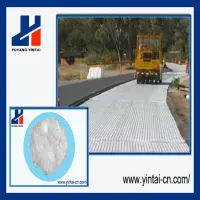-
Categories
-
Pharmaceutical Intermediates
-
Active Pharmaceutical Ingredients
-
Food Additives
- Industrial Coatings
- Agrochemicals
- Dyes and Pigments
- Surfactant
- Flavors and Fragrances
- Chemical Reagents
- Catalyst and Auxiliary
- Natural Products
- Inorganic Chemistry
-
Organic Chemistry
-
Biochemical Engineering
- Analytical Chemistry
- Cosmetic Ingredient
-
Pharmaceutical Intermediates
Promotion
ECHEMI Mall
Wholesale
Weekly Price
Exhibition
News
-
Trade Service
To advance plans to provide high-speed, affordable internet connectivity to areas without internet access, Facebook's Connectivity Lab has developed wireless Internet connectivity technology
that uses laser communications.
Now, lasers are used not only through fiber-optic networks, but also radio waves and microwaves
on wireless networks.
With lasers, higher speeds can be communicated, but it is not so simple to realize distant detectors through thin laser lines
.
Tobias Tiecke, who led the research team and published research papers in the academic newspaper Optica, said: "There are still many people living in extremely remote parts of the world, unable to access the Internet
because they cannot use wireless communication infrastructure.
”
The R&D team combined this device with existing communication technology using a technology called "light bulb-like detection equipment and quadrature frequency division multiplexing system" to successfully send data
at a speed of 2Gbps.
To advance plans to provide high-speed, affordable internet connectivity to areas without internet access, Facebook's Connectivity Lab has developed wireless Internet connectivity technology
that uses laser communications.
Now, lasers are used not only through fiber-optic networks, but also radio waves and microwaves
on wireless networks.
With lasers, higher speeds can be communicated, but it is not so simple to realize distant detectors through thin laser lines
.
Tobias Tiecke, who led the research team and published research papers in the academic newspaper Optica, said: "There are still many people living in extremely remote parts of the world, unable to access the Internet
because they cannot use wireless communication infrastructure.
”
The R&D team combined this device with existing communication technology using a technology called "light bulb-like detection equipment and quadrature frequency division multiplexing system" to successfully send data
at a speed of 2Gbps.







